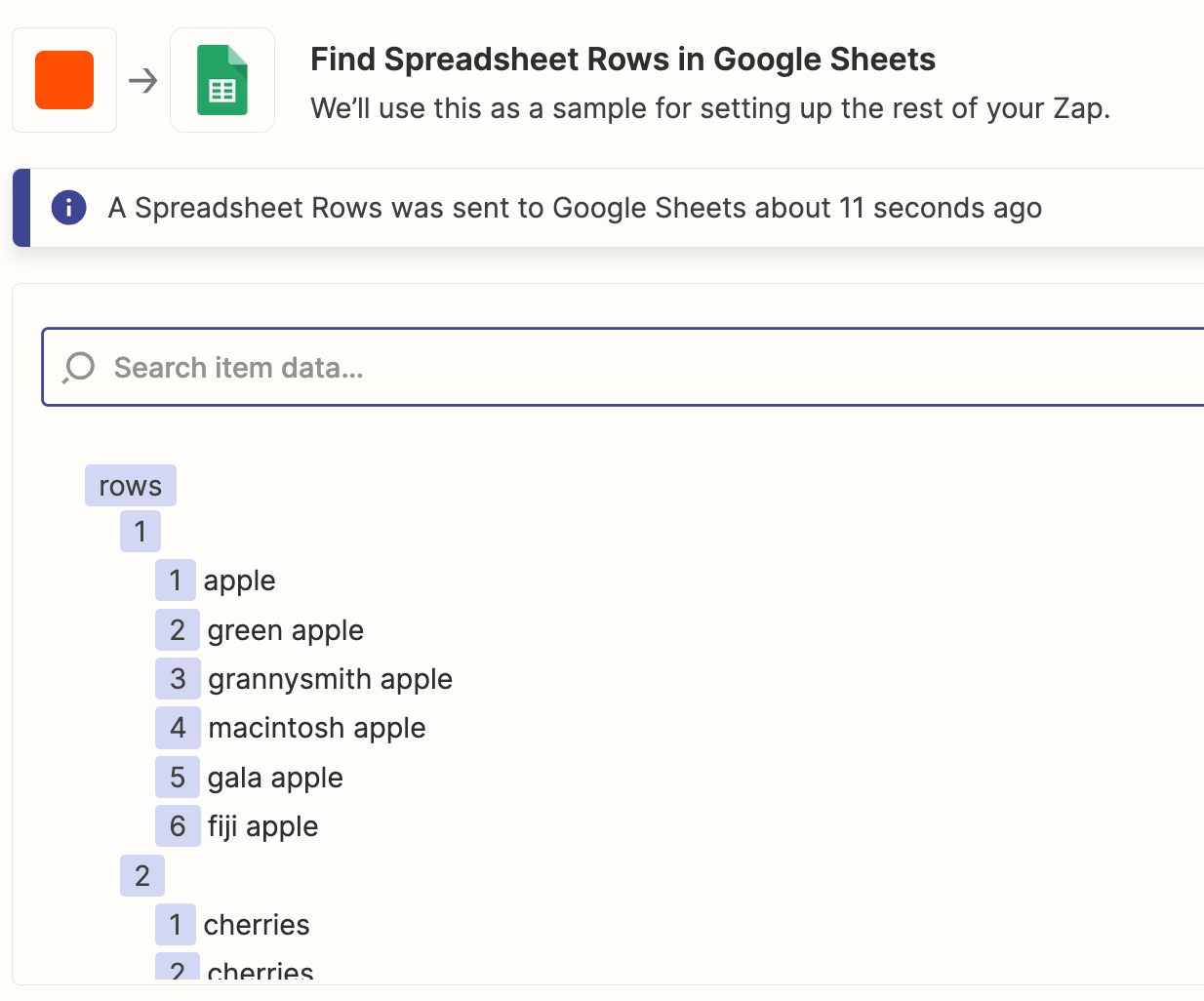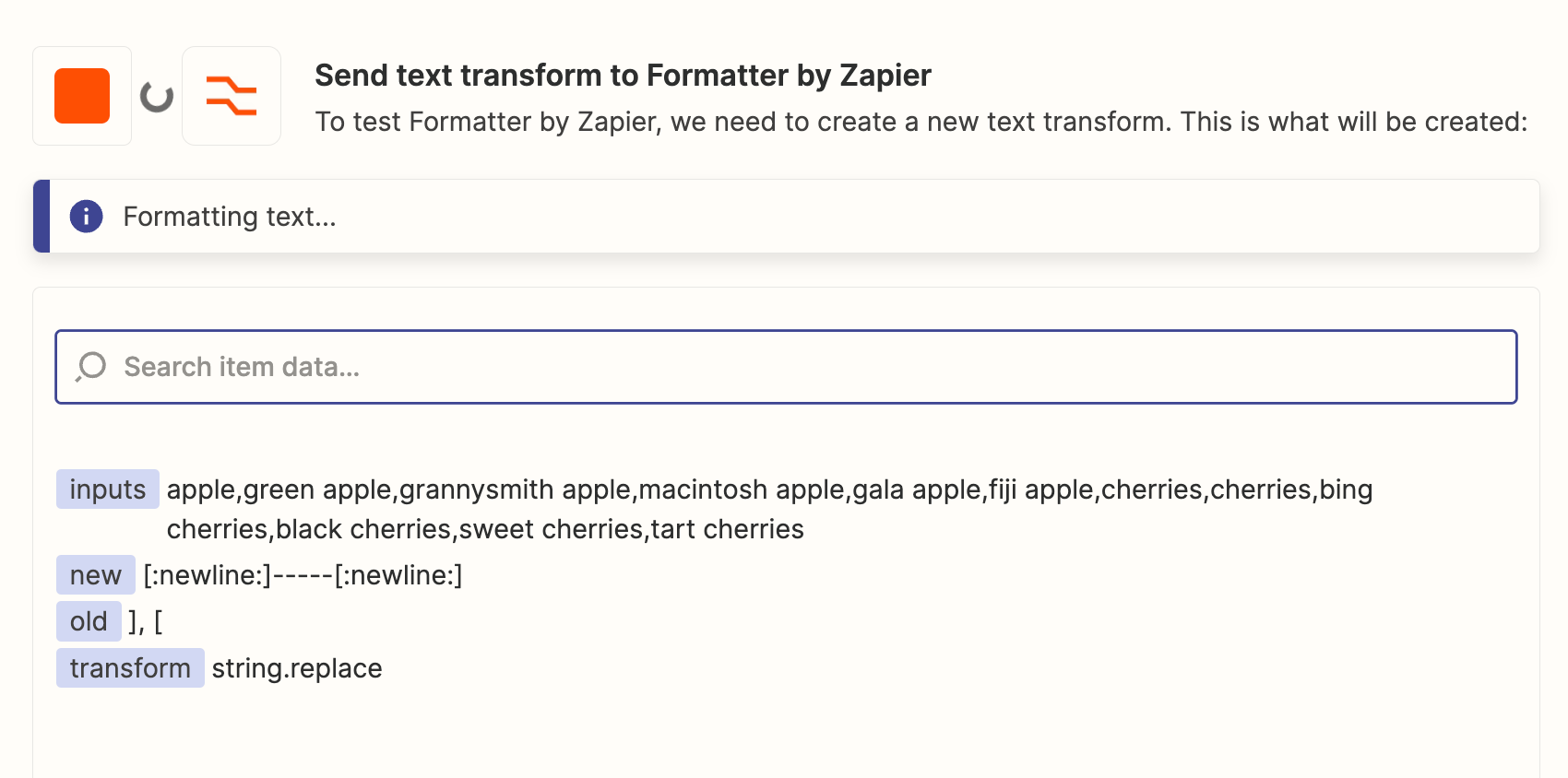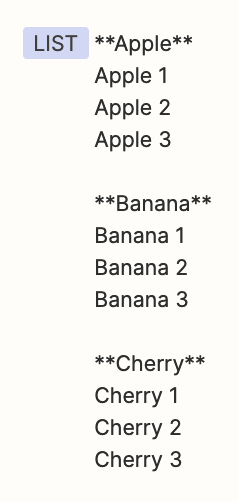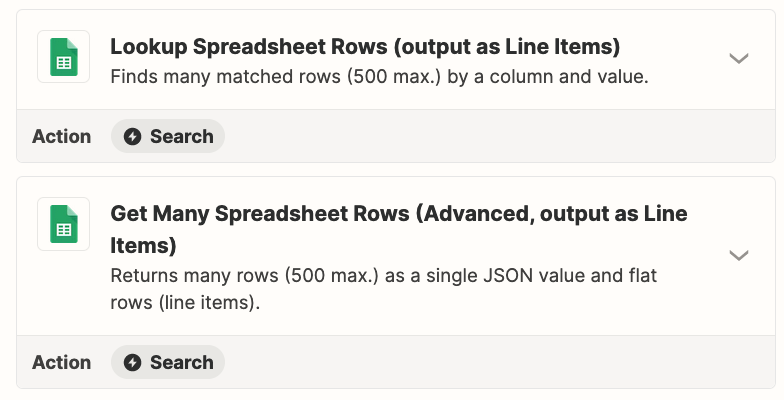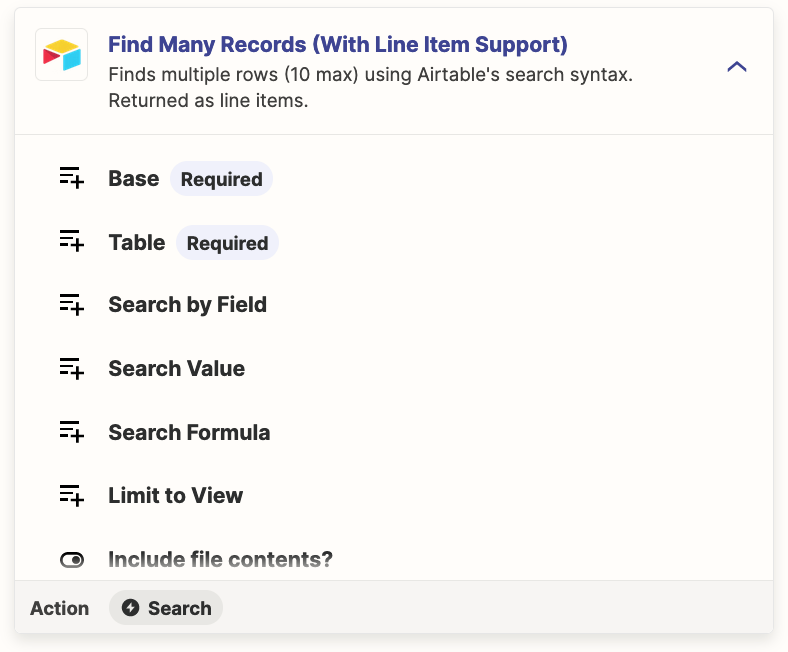I have an action that reads data from a spreadsheet using Get Many Spreadsheet Rows (Advanced, output as Line Items)
The rows output is structured as nested line items, with the row number as the parent node and columns as the children. When I use that input to the next step it comes in as one comma separated string. Is that expected?
My work-around is to use the raw_rows output and then use several formatting steps to separate it into line items again and strip out the extra quote and bracket characters. I feel like my zap has 5 extra formatting steps that shouldn’t be necessary and it’s causing me to hit the API limit much faster than if the original format were preserved.
Here is the output and then what comes in as input on the next action:
